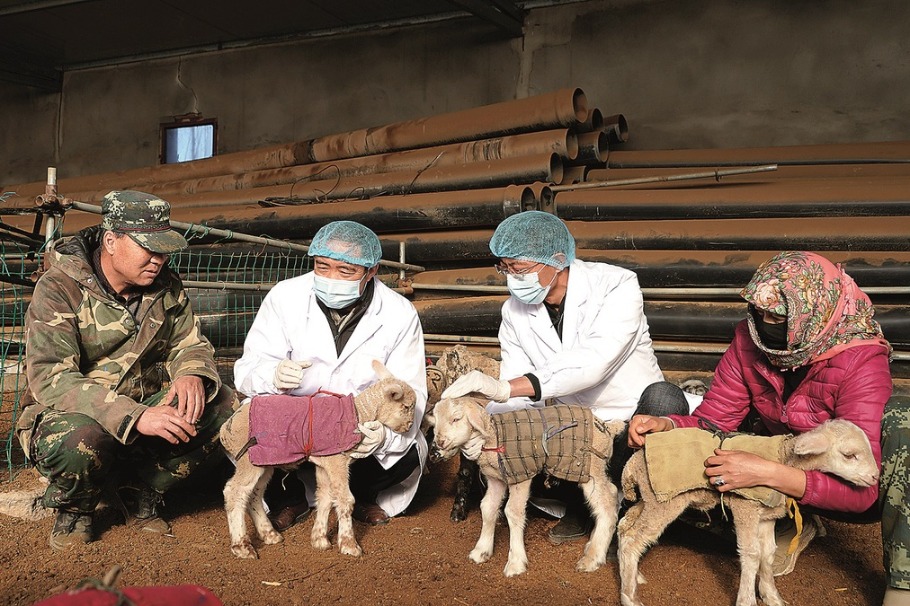Fresh approaches to winter pasturing see strong returns
Use of high-tech methods reduce environmental impact, boost incomes






Caring for livestock during the cold season in Northwest China has been modernized in recent years, with Beidou positioning, mobile support vehicles and real-time weather updates making the trek to winter pastures easier for herdsmen and animals.
The sight of hundreds of thousands of yaks, cattle, sheep and camels migrating through high country has become one of the most colorful images marking the coming of winter.
However, in Sunan Yugur autonomous county in Zhangye, Gansu province, a rare sight could be seen this year. About 200,000 livestock were still grazing in the area on farmland rented by the herders as the winter closed in. The yaks and sheep were eating stalks left from the last corn harvest.
The move to keep them in the vicinity is being adopted across the county with the aim of boosting farm incomes while reducing environmental stress.
Gao Yongdong, 53, raises 200 yaks and about 20 sheep at Kangle town near the Qilian Mountains.
He paid 37,000 yuan ($5,102) to farmer Gan Junzhu to rent 13.33 hectares of farmland at the foot of the mountains for his livestock to feed on from October to next spring.
"My own grassland will be undisturbed and grow naturally so that the quality of grass next year can be improved," he said.
The mountains, stretching over 800 kilometers, have a vast area of high-altitude grassland, with Yugur, Tibetan and Mongolian herdsmen living there.
In 2000, a handful of herdsmen in Sunan county voluntarily adopted the new model, and the practice of not moving livestock in winter has been increasing ever since.
Zhu Wenxin, head of the forage grass department of Zhangye's animal husbandry and veterinary bureau, said in the past there had been an overgrazing problem due to the limited grass production in winter pastures. This affected the regeneration of grassland and damaged vegetation, he said.
"Using the new model, the grassland has a five-month break to recover," Zhu said.
"The ample corn stalks in the fields serve as food, allowing livestock that would otherwise not have enough to eat during winter…to resist the cold and be fattened up instead. This has increased the sale price of yaks and sheep in the spring and is also good for livestock reproduction."
For farmers who grow corn, the income from renting their fields for grazing is higher than selling the stalks, he added. "More importantly, after the yaks and sheep consume the stalks, they leave manure in the fields, which becomes organic fertilizer when the fields are plowed in the spring," he said.



















